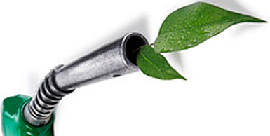
| Monday, July 25, 2011 | Archives | Advertise | Online Buyer's Guide | FLEETSolutions |
Study: Alt-Fuels Slow To Challenge Petroleum Dominance In California
 A new California study suggests that recent alternative-fuel advances will lead to significant displacement of petroleum-based fuels; however, petroleum, gasoline, and diesel will most likely continue to fuel more than seventy-five percent of the state’s vehicles in the year 2030. A new California study suggests that recent alternative-fuel advances will lead to significant displacement of petroleum-based fuels; however, petroleum, gasoline, and diesel will most likely continue to fuel more than seventy-five percent of the state’s vehicles in the year 2030.The report, released by the groups Fueling California and Orange County Business Council, points to the relatively slow turnover rate for the on-road vehicle fleet as a major factor. The lifetime of a vehicle is typically between ten and fifteen years. Researchers at the University of California at Irvine, Automobile Club of Southern California, and Tiax LLC authored the report, titled Projected Outlook for Next Generation and Alternative Transportation Fuels in California 2010-2030. The report discusses the three principal drivers for the development of alternative fuels worldwide: greenhouse gasses, energy security, and urban air pollution. Researchers also address state policies, socio-economic factors, market forces, and the business environment in California that also place the state in a leadership role for the development and definition of the global alternative-fuel landscape of the future. "Alternative fuels are currently receiving a lot of attention in business, media, and politics," said Shane Stephens-Romero with the Advanced Power and Energy Program at UC Irvine, primary author of the study. "With so much focus on the topic, this report fulfills an important need by providing an information resource that is anchored in the real market, technical, environment, and policy levers that are shaping the alternative fuel landscape." The report projects that petroleum, gasoline, and diesel, which in 2010 fueled ninety-four percent of California’s light-duty vehicles and 98.7 percent of the state’s heavy-duty vehicles, will still be required for seventy-nine percent of light-duty vehicles and 76.7 percent of heavy-duty vehicles in 2030. "We know the migration to alternate fuels will take a long time to have a significant impact on gasoline and diesel use, but the study clearly shows movement in the right direction," said Steve Mazor, Manager of the Automotive Research Center for the Auto Club and a contributing author to the study. "Based on the study and member interest we have seen recently as well as the growth in mainstream manufacturers making vehicles that run on alternative fuels, we’re optimistic that once the marketplace indicates which alternative fuels make the most sense for motorists, the change will take place more quickly." In the heavy-duty sector, the study projects biodiesel and renewable diesel to have the biggest jump. Also significant for heavy-duty vehicles is natural gas, projected to increase significantly from now to 2030. Rounding out the 2030 fuel mix for these types of vehicles are ethanol, hydrogen, and electric/plug-in – the latter of which will play a smaller but significant role, researchers concluded. In the light-duty vehicle sector, the biggest increase is projected for hydrogen. However, ethanol is projected to be the largest contributor to the alternative-fuel mix, with blending in gasoline going as high as fifteen percent. Nonetheless, study projections suggest that the trend in light-duty vehicles will be towards electrification of the drivetrain, with fuel cell electric and plug-in electric vehicles playing an increasingly significant role between now and 2030. "A lot of opportunities for alternative fuel technologies exist in California," said Stephens-Romero. "Technology providers could directly bid for state funds that are being directed towards the development of alternative fuels or federal funds for which California is very competitive, given the momentum here on alternative fuel deployment. They can also search for businesses, cities, educational institutions, or air districts that are seeking to turn over vehicle fleet to operate on alternative fuels as part of the strategy to meet California’s greenhouse gas reduction mandate." For more information on Fueling California and to download the study, visit: www.fuelingcalifornia.org. |
 |
NAFA Fleet Management Association 125 Village Blvd., Suite 200 Princeton, NJ 08540 Telephone: 609.720.0882 Fax: 609.452.8004 |






